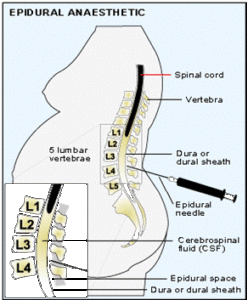A hysterectomy, the surgical removal of the uterus, is a procedure that can have significant benefits and drawbacks. This guide explores the key pros and cons of a hysterectomy to help you understand its implications.
Pros
1Resolution of Medical Issues: Effectively treats conditions such as fibroids, endometriosis, and uterine cancer.
2Elimination of Symptoms: Provides relief from chronic pelvic pain, heavy menstrual bleeding, and other debilitating symptoms.
3Prevention of Uterine Cancer: Eliminates the risk of uterine cancer, especially in high-risk individuals.
4Improved Quality of Life: Enhances quality of life for those suffering from severe gynecological issues.
5Permanent Birth Control: Acts as a permanent method of contraception.
6No Menstruation: Stops menstrual periods, which can be beneficial for women with severe menstrual disorders.
7Reduced Risk of Ovarian Cancer: In some cases, reduces the risk of ovarian cancer if the ovaries are also removed.
8Increased Sexual Comfort: Can improve sexual comfort and reduce pain during intercourse in some women.
9Lower Risk of Pelvic Organ Prolapse: Prevents the possibility of uterine prolapse.
10Anemia Resolution: Helps resolve anemia caused by heavy menstrual bleeding.
11Post-Menopausal Relief: Provides relief from post-menopausal bleeding issues.
12Tailored Approach: Offers various surgical options (total, partial, laparoscopic, robotic) tailored to individual needs.
13Reduced Medication Dependency: Decreases the need for medications to manage symptoms.
14Fewer Doctor Visits: Reduces the frequency of gynecological appointments and interventions.
15Enhanced Mental Health: Can improve mental health and reduce anxiety related to chronic gynecological problems.
16Shorter Recovery Time: Advances in surgical techniques have shortened recovery times for many patients.
17Improved Daily Function: Enables women to resume normal daily activities without the hindrance of severe symptoms.
18Prevention of Other Conditions: Prevents other potential conditions related to the uterus, such as adenomyosis.
19Cosmetic Benefits: May improve cosmetic concerns related to pelvic bloating or distension.
20Fewer Restrictions: Eliminates lifestyle restrictions related to severe menstrual issues.
Cons
1Major Surgery Risks: Involves risks associated with major surgery, including infection, bleeding, and anesthesia complications.
2Recovery Time: Requires a recovery period that can be lengthy and involve significant downtime.
3Loss of Fertility: Permanently ends the ability to conceive and bear children.
4Hormonal Changes: If the ovaries are removed, it can lead to immediate menopause and related symptoms.
5Emotional Impact: Can have emotional and psychological effects, including feelings of loss or depression.
6Sexual Function: Potential changes in sexual function, including decreased libido or vaginal dryness.
7Surgical Complications: Possibility of surgical complications such as damage to surrounding organs.
8Chronic Pain: Some women may experience chronic pelvic pain after the procedure.
9Hormone Replacement Therapy: May require hormone replacement therapy (HRT) if the ovaries are removed.
10Bladder and Bowel Issues: Can lead to bladder and bowel dysfunction or complications.
11Impact on Body Image: May affect a woman’s body image and sense of femininity.
12Adhesions and Scarring: Risk of internal adhesions and scarring that can cause future complications.
13Bone Density Loss: Increased risk of osteoporosis if the ovaries are removed and not managed with HRT.
14Cardiovascular Risks: Higher risk of cardiovascular disease if menopause is induced surgically.
15Reduced Sexual Sensation: Some women report reduced sexual sensation or satisfaction post-surgery.
16Hormonal Imbalance: Potential for hormonal imbalance and associated symptoms if ovaries are removed.
17Cost: Can be expensive and may not be fully covered by insurance.
18Physical Limitations: Temporary physical limitations and restrictions during the recovery period.
19Hospital Stay: Requires a hospital stay, which can vary in length depending on the type of surgery.
20Follow-Up Care: Necessitates follow-up care and monitoring to manage any post-surgical complications.



